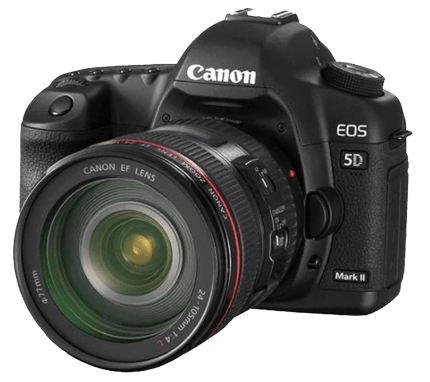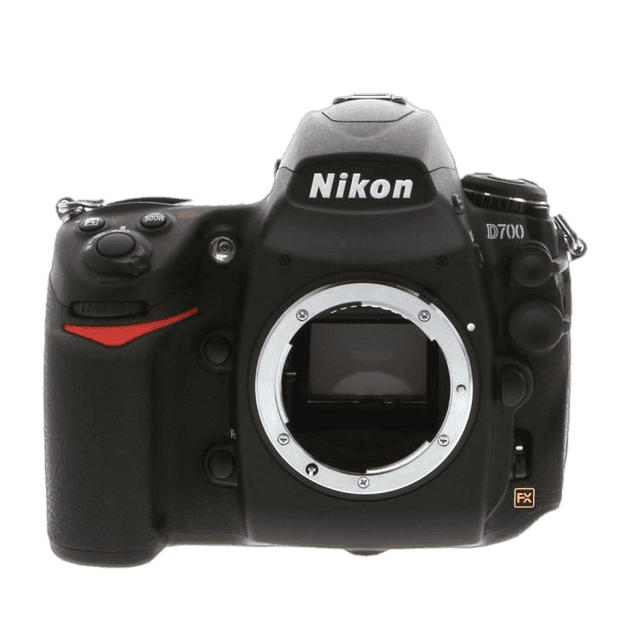Canon EOS 5D Mark II vs Nikon D700 Comparison
Canon EOS 5D Mark II

Nikon D700

The Canon EOS 5D Mark II edges out the Nikon D700 with a score of 56/100 compared to 53/100. Both cameras are DSLR models released in 2008, with similar sizes: the Canon measures 152 x 114 x 75mm while the Nikon is 147 x 123 x 77mm. They also share the same launch price range of $2199 for the Canon and $2699 for the Nikon.
The Canon EOS 5D Mark II stands out due to its lighter weight of 850g, making it more portable than the Nikon D700, which weighs 1074g. This difference in weight can be a deciding factor for photographers who need to carry their gear around for extended periods.
On the other hand, the Nikon D700 has a more compact body, which might be preferred by some users who value a smaller camera size. However, the difference in dimensions is relatively minor and may not significantly impact the user experience.
Taking these factors into account, the Canon EOS 5D Mark II is the overall winner due to its lighter weight, while the Nikon D700 may still appeal to those who prefer a slightly smaller camera.
Canon EOS 5D Mark II vs Nikon D700 Overview and Optics
The Canon EOS 5D Mark II outperforms the Nikon D700 in optics, scoring 59/100 compared to the Nikon’s 54/100. Both cameras share some common specifications, such as having a CMOS sensor, full frame sensor size, and no image stabilization. They also have different lens mounts, with the Canon using the EF mount and the Nikon using the F FX mount.
The Canon EOS 5D Mark II has a higher megapixel count at 21 compared to the Nikon D700’s 12.1, which allows for capturing more detail in images. It also features a Digic 4 processor, which contributes to its overall better optics performance. However, the Nikon D700 has a faster shooting speed of 8 frames per second, which is double the Canon’s 3.9. This makes the Nikon more suitable for capturing fast-moving subjects.
Despite having a lower overall optics score, the Nikon D700 has a slightly higher DXOMARK score for its sensor at 80, compared to the Canon’s 79. This means that the Nikon’s sensor performance is slightly better, but not enough to outweigh the advantages of the Canon’s higher megapixel count and processor.
Taking these factors into account, the Canon EOS 5D Mark II is the better choice for those prioritizing image detail and quality, while the Nikon D700 is better suited for photographers requiring faster shooting speeds. Ultimately, the decision depends on the specific needs and preferences of the photographer, but the Canon EOS 5D Mark II’s higher optics score makes it the winner in this comparison.
Canon EOS 5D Mark II vs Nikon D700 Video Performance
When comparing the video capabilities of the Canon EOS 5D Mark II and the Nikon D700, it is important to note that the Nikon D700 does not have video functionality. This means that the Canon EOS 5D Mark II is the only camera in this comparison with video capabilities.
The Canon EOS 5D Mark II has a video score of 43 out of 100. It provides Full HD video recording, with a maximum resolution of 1920 x 1080 pixels. The camera can record video at a frame rate of up to 30 frames per second. However, it does not have built-in time-lapse functionality.
Given the lack of video functionality in the Nikon D700, the Canon EOS 5D Mark II is the better option for those seeking a camera with video capabilities. The Canon EOS 5D Mark II’s Full HD resolution and 30fps frame rate provide decent video quality, despite its relatively low video score.
Canon EOS 5D Mark II vs Nikon D700 Features and Benefits
The Canon EOS 5D Mark II and Nikon D700 both have a feature score of 54/100, making them evenly matched in this aspect. Both cameras share common specifications, such as a 3-inch screen, no touchscreen, no flip screen, no GPS, WiFi connectivity, and no Bluetooth.
The Canon EOS 5D Mark II has a screen resolution of 920,000 dots, while the Nikon D700 has a slightly higher screen resolution of 922,000 dots. This difference in resolution means that the Nikon D700 provides a marginally sharper and clearer display compared to the Canon EOS 5D Mark II. This can be useful for photographers who need to review their images in more detail on the camera’s screen.
However, the Canon EOS 5D Mark II has WiFi connectivity, which the Nikon D700 lacks. WiFi connectivity allows users to transfer images to their devices more easily and remotely control the camera. This feature can be beneficial for photographers who want to share their images quickly or control their camera from a distance.
Despite these differences, both cameras have a similar feature score, indicating that they offer comparable functionalities. The Nikon D700’s slightly higher screen resolution may be useful for some photographers, while the Canon EOS 5D Mark II’s WiFi connectivity may be more important to others. Ultimately, the choice between these two cameras will depend on individual preferences and priorities.
Canon EOS 5D Mark II vs Nikon D700 Storage and Battery
The Nikon D700 wins the storage and battery comparison with a score of 43/100, while the Canon EOS 5D Mark II scores 37/100. Both cameras have one memory card slot and do not offer USB charging. They differ in the type of memory cards accepted and battery life.
The Canon EOS 5D Mark II accepts Compact Flash (Type I or II), UDMA, and Microdrive cards, providing more flexibility in memory card choices. Its battery life is 850 shots per charge using the LP-E6 battery. On the other hand, the Nikon D700 only accepts Compact Flash (Type I) cards but has a longer battery life of 1000 shots per charge with its EN-EL3e battery.
While the Canon EOS 5D Mark II offers more memory card options, the Nikon D700 outperforms it in battery life. Both cameras have their advantages, but the Nikon D700 takes the lead in this comparison due to its longer-lasting battery.
Canon EOS 5D Mark II vs Nikon D700 – Our Verdict
Are you still undecided about which camera is right for you? Have a look at these popular comparisons that feature the Canon EOS 5D Mark II or the Nikon D700:

